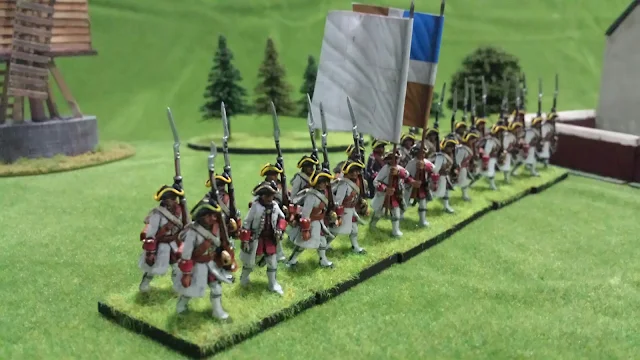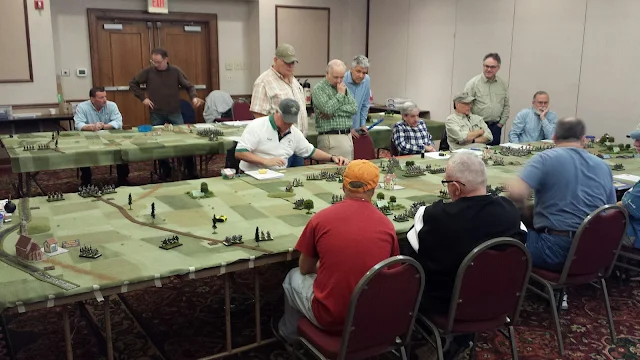Tuesday, October 24, 2017
The Charge: The Real Reason Why the Light Brigade was Lost. By Mark Adkin
" An officer named Captain Nolan, who writes books, and was a great man in his own estimation..."
Colonel Lord George Paget
October 25 is a very special day for me. It is my wife Janine's birthday. It was the day (after I retired from the National Park Service after thirty years) that I started my second career with jetblue. And it is the anniversary of the Battle of Balaclava and the Charge of the Light Brigade. I am fascinated with the Crimean War and The Charge has been one of those incidents I return to time and again. So when I found This book back in 2001 I picked it up. I read it in one sitting and it has been re-read numerous times since. I am delighted it has just been released in a kindle edition.
This is the kind of book that shows how military history should be written. It is a careful analysis of the Battle of Balaclava and especially the Light Brigade's charge with the emphasis on untangling the hows and whys that resulted in the charge. The book is extremely well researched, with well thought out explanations, good illustrations and especially outstanding maps. Many, many maps.
Complimenting the maps (and tied into them) are a series of battle and topographical drawings which are very effective in understanding the battle. These drawings are based on a series of photographs done by the photographer Fenton which show the actual battlefield from where Lord Raglan watched and sent his infamous order from. The photographs were taken slightly after The battle so they provide a you are there view.
The usual villain responsible for the disaster in most books was Lord Lucan the Cavalry Division commander. I am glad to say he is given a fair shake here and is partly exonerated; but with serious criticism. I do wish the author discussed more about Lucan's decision to pull back The Heavy Brigade during the Light Brigades charge. A fascinating what if. The primary culprits in Adkin's view are Lord Raglan and his ADC Captain Nolan. Raglan was clearly over his head as army commander. I find little positive about him and blame him for the disaster that the army suffered that terrible winter. Cardigan by the way comes out as a very brave man who had not the foggest idea of what was what. If you saw the 1968 movie of the Charge of the Light Brigade these three main actors really captured and look the part of their historical characters. In my opinion of course.
Adkin believes Captain Nolan may have deliberately indicated the incorrect objective. In my opinion the author makes an excellent case that Nolan deliberately misrepresented Lord Raglan's order when he delivered It to Lord Lucan. Nolan, a self educated authority on cavalry had never served on campaign not been in battle. But he was certain that British cavalry were being misused and was very vocally critical of all commanders but especialy Lucan And Cardigan. He was certain Light Cavalry could overthrow anything in its way and that neither infantry nor artillery could stop them. He had once demonstrated in a classroom how light cavalry alone could charge and take out a battery from the front. Nolan possibly did not have second thoughts about the liberty he took as aide-de-camp in misinterpreting Lord Raglan's written order. His death, the first casualty of The Charge prevented his being questioned after. The author suggests and I agree Nolan wasn't trying to stop the charge when he was killed. Most who took part in the action certainly though so.
Also interesting is the account of the actual charge. Details such as such as how many rounds were fired at the brigade, how a artillery battery operated, how cavalry horses were so trained they remained in formation after their riders were killed, and how the casualties were not as spectacular as is often claimed. The Light Brigade was no longer combat efficient due to the horrendous number of horses killed which could not be replaced.
I especially enjoyed the epilogue - A Balaclava Banquet about the 1875 dinner for the survivors, which sounds like a rockous good time. The appendix section entitled The Last Survivors was moving to read. Those who were impoverished were provided for by a wealthy Fleet Street publisher who established the Roberts Relief Fund to provide them with a pension. The last survivor passed away in 1927.
Monday, October 23, 2017
Royal Ecossais 1745
In the pages of the Fife and Drum forum was where I first saw pictures of the figures for this regiment. They were very different and had a air about them. The short coats and bonnets are Scottish, but there is also something French about them. So with my first order I made sure I got a regiment.
My reading about their history suggests the uniform was what might have been worn when they landed in Scotland to assist in the 1745 Rebellion. Along with the picqets from the Irish Brigade they were the token effort sent by France to help out. At Culloden they covered the retreat of the Jacobite right wing from the battle.
Figures are from Crann Tara miniatures. Flag from GMB design.
Sunday, October 22, 2017
Regiment Orleans 1745
I have made great progress on my project of painting a mid eighteenth century army to refight the table top teasers and other actions from the books of Charles Grant both father and son. Since starting the project I now have four infantry regiments finished and two more primed and readying go. I am looking at a small army of eight regiments line, there cavalry and two guns for each side to start. Where it goes from there who knows!
I picked the era of 1745, The War of Austrian Succession for the slightly different uniforms, the interesting history and for the outstanding figures offered by Graham at Crann Tara miniatures.
The first of my regiments for my mid eighteenth century project is the Regiment Orleans. I know very little about The actual regiment but liked the red cuffs contrasted in the white coats. Not sure I got the correct white painting method for the uniforms yet. But out looks nice and it's a start. Figures are from Crann Tara. Flags from GMB
Saturday, October 21, 2017
An Saturday afternoon playing toy soldiers
I as extremely lucky to be a part of a true miniature wargame experience. Ed, from Ed M's Wargaming Means a blog put on a amazing game. It was a massive Napoleonic game, French vs Prussians. It was fought over a main table of 20' with two similar size tables for the match on area. So troops could be deployed and moved off table before marching into the main table. Very ingenious. To assist commanders looking across the room at the enemy armies Ed provided miniature telescopes!
Great fun trying to ID what those troops entering the table could be.
Both Ed
http://edmwargamemeanderings.blogspot.com
and AJ
http://ajs-wargaming.blogspot.com/2017/10/northern-conspiracy-october-2017-game.html
blogs provided outstanding reviews of the great battle. Since I was a lowly brigade commander i was lost in the middle of the table and honesty cannot tell you what was happening around me. Fog of war indeed.
Again many thanks to Ed for the great amount of work he put into this game and the incredible experience he provided to us all. Thank you Ed!
Friday, October 20, 2017
CURTISS P-40B TOMAHAWK at ORH
I was leaving work at Worcester Airport (ORH) when I noticed another aircraft from The Collins Foundation parked by The hangers. The story about The plane is fascinating.
The text is from The Collins Foundation website
at http://www.collingsfoundation.org/aircrafts/curtiss-p-40b-tomahawk/
The P-40 was the third-most numerous US fighter of World War II. An early prototype version of the P-40 was the first American fighter capable of speeds greater than 300 mph.
Thanks to a very generous sponsor, the world’s only P-40B and only surviving airworthy American fighter from the Japanese attack on Pearl Harbor joined the Collings Foundation.
One of the 131 P-40Bs built at the Curtiss facility in Buffalo, New York during 1940-1941 and allocated the Bu No. 41-13297, this fighter was delivered to the US Army Air Corp in March 1941. It was quickly sent to Wheeler Field, Hawaii in April of that year, becoming part of the 19th Pursuit Squadron of the 18th Pursuit Group. In October 1941, seven months after delivery, this P-40 was involved in a wheels-up landing, requiring her to be placed in a maintenance hangar for repair.
This aircraft was still in the hanger undergoing repairs when the Japanese attacked Pearl Harbor on December 7, 1941. That seemingly minor twist of fate most likely saved P-40B 41-13297 from being destroyed. Following repairs it was returned to flight worthy status. Then, on January 24, 1942, in another ironic twist of fate, with only nine months of service and 56 hours of flight time, while on a routine training flight the plane spun out of control. The pilot, Lt. Kenneth Wayne Sprankle, was unable to recover from the spin, crashing into the side of a mountain, killing him. The crash occurred in a rather inaccessible area of the island. So, after recovery of the body the aircraft was left in place.
In 1985 the Tomahawk’s remains were ‘rediscovered.’ After some preliminary investigation, it was determined the air frame was not severely damaged and if it could be removed was restorable. Some parts were recovered during 1985. A second recovery mission in 1989 salvaged the rest of the air frame.
In 1989, the Curtiss Wright Historical Association in Torrance, California was formed and serious restoration of the recovered P-40 began. The restoration was named “Project Tomahawk.” Whenever possible parts indigenous to the plane were used. Two other P-40B’s, the 39-285 that also crashed in Hawaii in 1941 and 39-287, that went down in a severe storm over the Sierra Nevadas October 24, 1941 were utilized for parts. When completed, the Tomahawk eventually joined “The Fighter Collection” at Duxford (UK) in 2003. P-40B Tomahawk 41-13297 flies wearing the scheme she wore during her time in
Hawaii with the 18th Pursuit Group.
Hawaii with the 18th Pursuit Group.
Subscribe to:
Comments (Atom)













